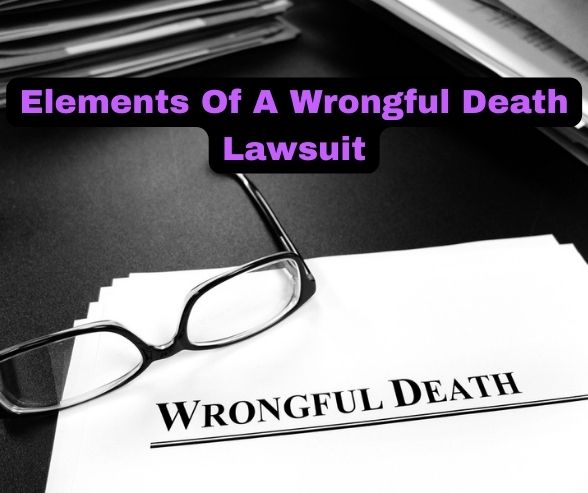Losing a loved one is an emotionally devastating experience, and when that loss occurs due to someone else’s negligence or intentional actions, it can be even more difficult to bear. In such tragic circumstances, the law provides a means for the surviving family members to seek justice and compensation through a wrongful death lawsuit. A wrongful death lawsuit is a legal action brought against the responsible party to hold them accountable for their actions and provide financial relief to the survivors. To succeed in a wrongful death lawsuit, several key elements must be established and it is critical to get in touch with a top Houston wrongful death lawyer.
Contents
Duty of Care
 The first element in a wrongful death lawsuit is establishing that the defendant owed a duty of care to the deceased person. Duty of care refers to the legal obligation to act with reasonable care and caution to prevent harm to others. In many cases, this duty is implicit, such as the duty of a driver to operate a vehicle safely to avoid accidents. For example, a healthcare provider has a duty of care to their patients to provide a certain standard of medical care.
The first element in a wrongful death lawsuit is establishing that the defendant owed a duty of care to the deceased person. Duty of care refers to the legal obligation to act with reasonable care and caution to prevent harm to others. In many cases, this duty is implicit, such as the duty of a driver to operate a vehicle safely to avoid accidents. For example, a healthcare provider has a duty of care to their patients to provide a certain standard of medical care.
In order to be successful in a wrongful death lawsuit, it must be demonstrated that the defendant had a duty of care towards the deceased person. This duty could be established through a professional relationship, a contractual agreement, or simply by virtue of the circumstances.
Breach of Duty
Once the duty of care is established, the next step is to prove that the defendant breached that duty. Breach of duty occurs when the defendant fails to uphold the standard of care required in the given situation. This breach can take many forms, such as reckless behavior, negligence, or intentional misconduct.
To establish a breach of duty, evidence must be presented that shows how the defendant’s actions or inactions deviated from what a reasonable person would have done under similar circumstances. This often involves presenting expert testimony to explain the standard of care and how the defendant’s actions fell short.
Causation
Establishing a breach of duty alone is not enough to succeed in a wrongful death lawsuit. The plaintiff must also prove that the defendant’s breach of duty was the direct cause of the deceased person’s death. This element, known as causation, requires a clear connection between the defendant’s actions and the fatal outcome.
Proving causation can be complex, especially in cases where multiple factors contributed to the death. Expert witnesses, such as medical professionals or accident reconstruction experts, may be called upon to provide testimony and demonstrate how the defendant’s actions or negligence played a significant role in causing the death.
Damages
In a wrongful death lawsuit, the surviving family members are seeking compensation for the losses they have suffered as a result of their loved one’s death. Damages can take various forms, including:
a. Economic Damages: These are quantifiable financial losses, such as medical expenses, funeral and burial costs, lost income, and the value of services the deceased would have provided to the family.
b. Non-Economic Damages: These are more subjective losses that are not easily quantified, such as emotional pain and suffering, loss of companionship, and mental anguish.
c. Punitive Damages: In some cases, punitive damages may be awarded to punish the defendant for particularly reckless or intentional conduct and to deter others from similar behavior.
To succeed in a wrongful death lawsuit, the plaintiff must present evidence of the damages they have suffered as a result of the death. This often involves providing documentation of financial losses and emotional distress, as well as expert testimony to support the claim for damages.
Standing to Sue
What Is Crucial When Collecting Evidence For Wrongful Death?
Not just anyone can bring a wrongful death lawsuit. Only certain individuals, typically immediate family members or designated beneficiaries, have standing to sue for wrongful death. The specific rules governing who can bring a wrongful death claim vary by jurisdiction, so it’s essential to consult with an attorney to understand who has the legal right to file a lawsuit.
Statute of Limitations
What Are The Elements Of Damages In Wrongful Death?
Lastly, it’s crucial to be aware of the statute of limitations, which is the timeframe within which a wrongful death lawsuit must be filed. The statute of limitations varies from state to state and can range from one to three years or more. Failing to file the lawsuit within the prescribed time limit can result in the case being dismissed.
In conclusion, a wrongful death lawsuit is a legal remedy that allows surviving family members to seek justice and compensation when a loved one’s death is caused by someone else’s negligence or intentional actions. To succeed in such a lawsuit, several key elements must be established, including the defendant’s duty of care, a breach of that duty, causation, and damages. Additionally, only individuals with standing to sue can initiate a wrongful death claim, and it’s essential to adhere to the statute of limitations. While no amount of compensation can truly make up for the loss of a loved one, a successful wrongful death lawsuit can provide financial support and a sense of closure for the grieving family.
You should get in touch with a qualified competent attorney for additional information.
Find Personal Injury Law Firms Nearby
TX Personal Injury Lawyer Office
